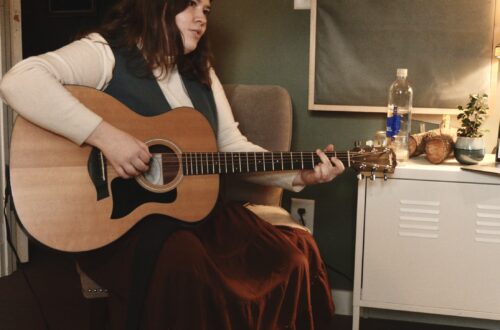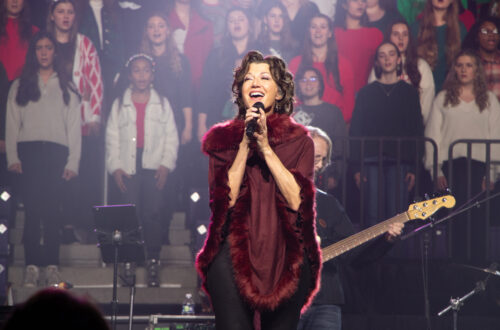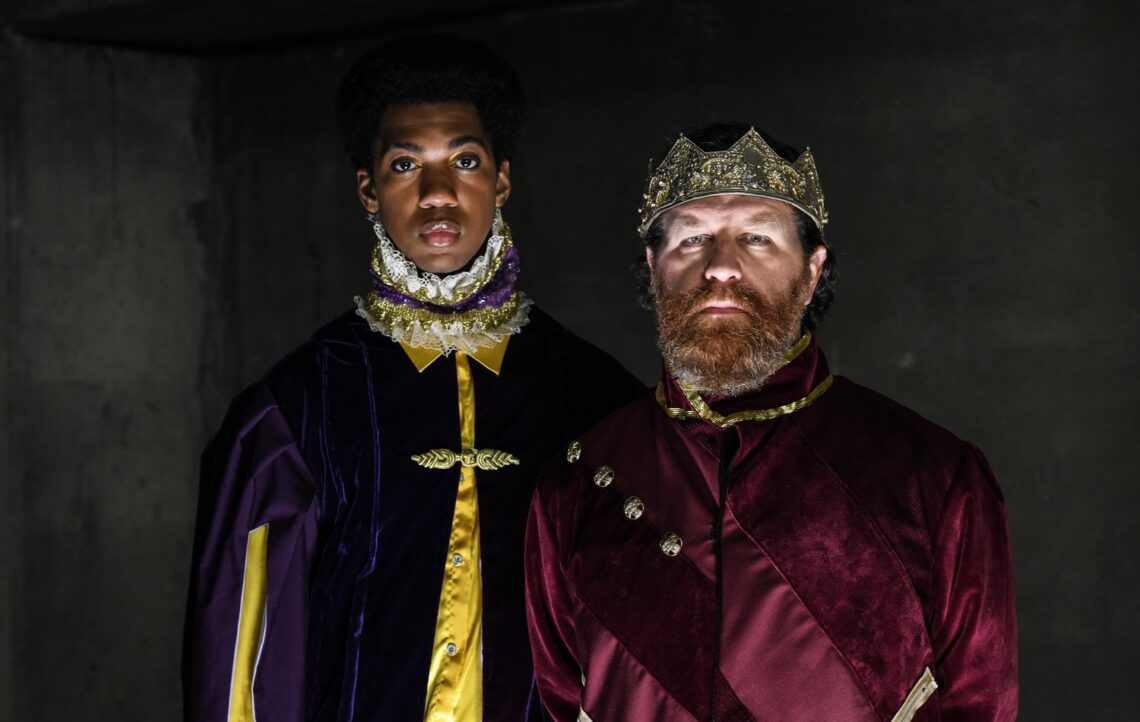
Hamlet opens: An inside look at the collaboration
Lipscomb University retold the timeless tale of Hamlet in a unique partnership between the Lipscomb Department of Theatre and The Nashville Shakespeare Festival. The Nashville Shakespeare Festival prioritizes educating and entertaining local audiences, including transporting students of participating schools to special student shows. These require a separate script to meet limited time requirements, and the cast and crew must learn new changes and transitions. They also must stage two shows a day during the week, alongside the busyness of college classes and finals season.
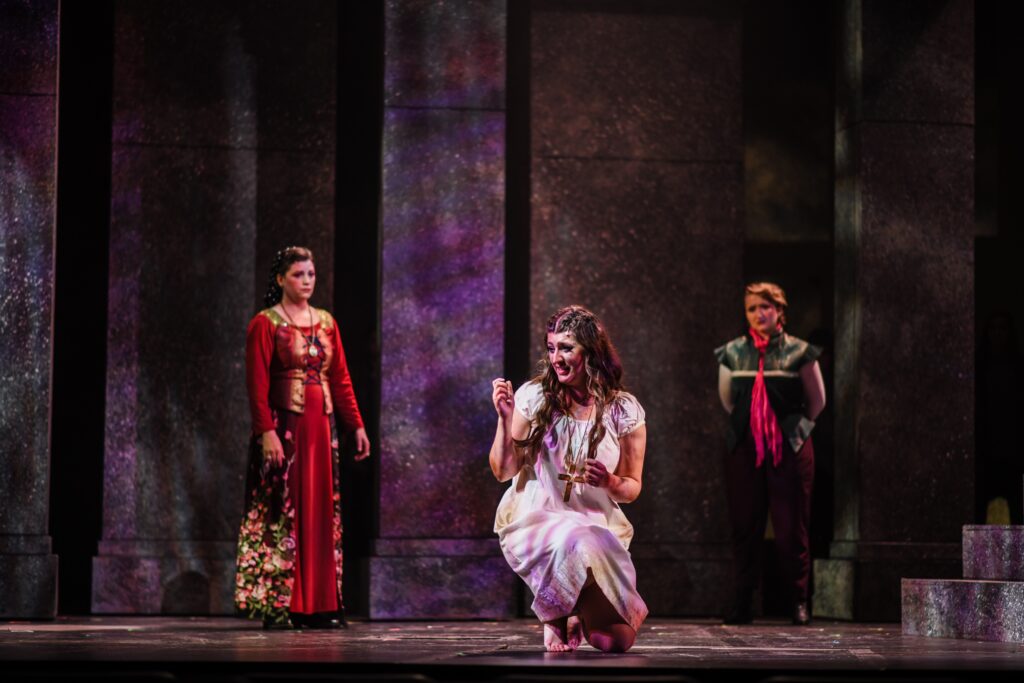
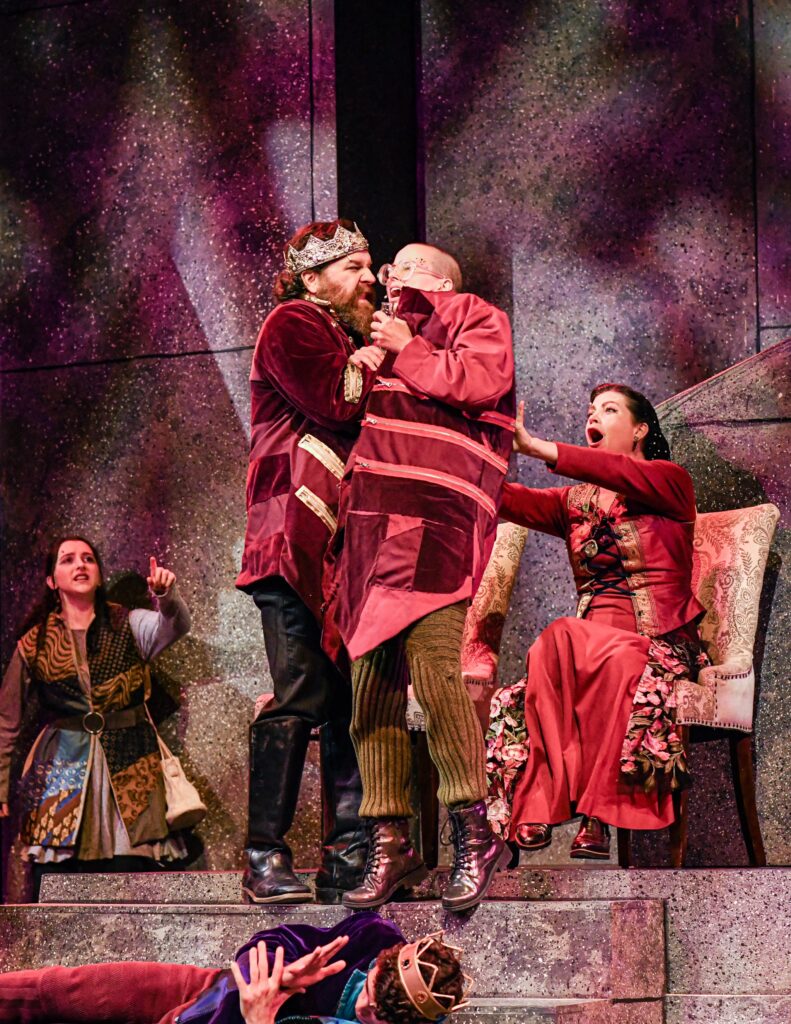
This partnership between the Lipscomb Department of Theatre and The Nashville Shakespeare Festival is not the first. They collaborated on Richard II in 2017 and As You Like It in 2020. However, due to COVID-19, this show had to be postponed and edited to meet COVID-19 requirements.
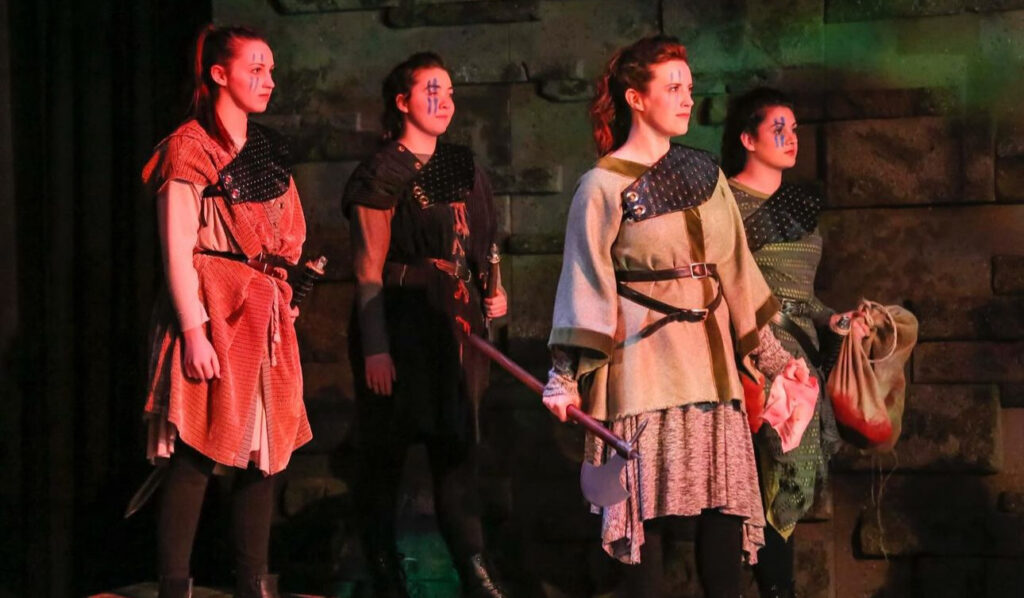
The students in the show gained the opportunity to work with several professional actors, a valuable learning experience. Director and Professor Nat McIntyre says he has enjoyed watching the students match the expectations of professionals.
Shakespeare’s works can be challenging to put on due to their complex themes and older language style. Hamlet is a classic Shakespeare piece, but that doesn’t make it less intimidating. “You can’t be afraid to hit the audience over the head with what’s happening,” McIntyre said. “Despite the difficult language, the themes and actions should jump out at them.” McIntyre encouraged his cast to find the humor in the tragedy, and also to understand every word they were speaking. “If they [don’t], how would the audience?”
Director McIntyre oversees the Acting Program at Lipscomb, identifying as an actor first. Due to that, he connects with the actors and brings a unique set of skills to the table. He trusts his actors to prioritize cultivating their characters and making bold choices and wants his cast to feel like they truly own their characters. Director McIntyre also acknowledges that as an actor, he relies heavily on an excellent design team and collaborates with them to reach a polished final product.
Hamlet’s design team blended Anne Willingham’s lighting design, Professor Andy Bleiler’s set design, and Professor June Kingsbury’s costume design to create the final work.
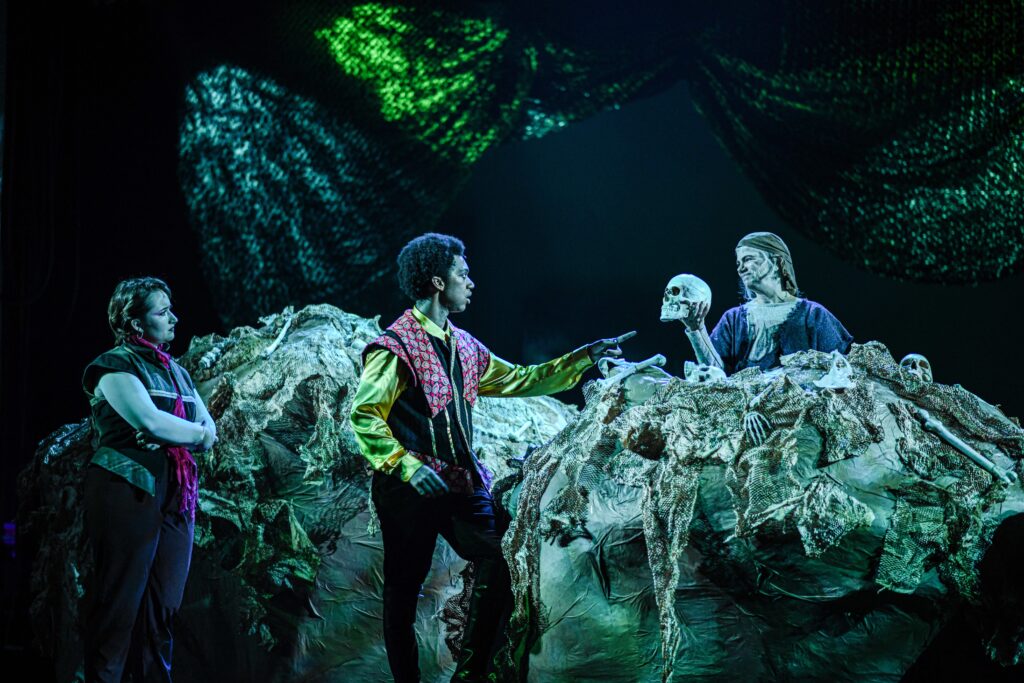
Professor Kingsbury did not match the typical hyper-realistic period piece costumes of other Hamlet productions. Instead, she took a medieval Danish slant to her design work, as instructed by Director McIntyre. Her pieces utilized the pattern of large shapes, something she found comparable to modern runway fashion. Costumes are an essential part of the show because of the layers they add to the audience’s visual experience.
Kingsbury’s colors pop against Bleiler’s gray-tone scenery. The colors are not there purely for entertainment, however. In this rendition of Hamlet, several cast members wear certain colors to symbolize family. Polonia, Laertes, and Ophelia all wear different forms of blue to show their family ties. Claudius and Gertrude both wear a deep red, signifying their family color. However, when comparing Hamlet’s costumes to those of his mother and uncle, his does not contain red. This is a nod to his disconnection from his family since his father’s passing. Some of late Professor Morris Landiss’s ties were donated for some the costumes, which can be read about here.
Costumes, hair, and makeup are all things that influence the actors and how they learn to grow into their characters. As an actor, knowing what your character chooses to look like each day helps you connect with the character in a new way. With the hair and makeup choices of Andrea Hernandez and Grace Mullins combined with the costumes, the show truly starts to come to life.
Regarding character development, David Long III reflects on his experience as Hamlet. Many know him as Will from last semester’s production of Big Fish. When asked what he thinks is different compared to other Hamlets, his answer is his goofiness. David brings a physicality to his performance and finds humor in the role. He found it vital to find himself in this role. He did so and worked hard he is proud of the result.
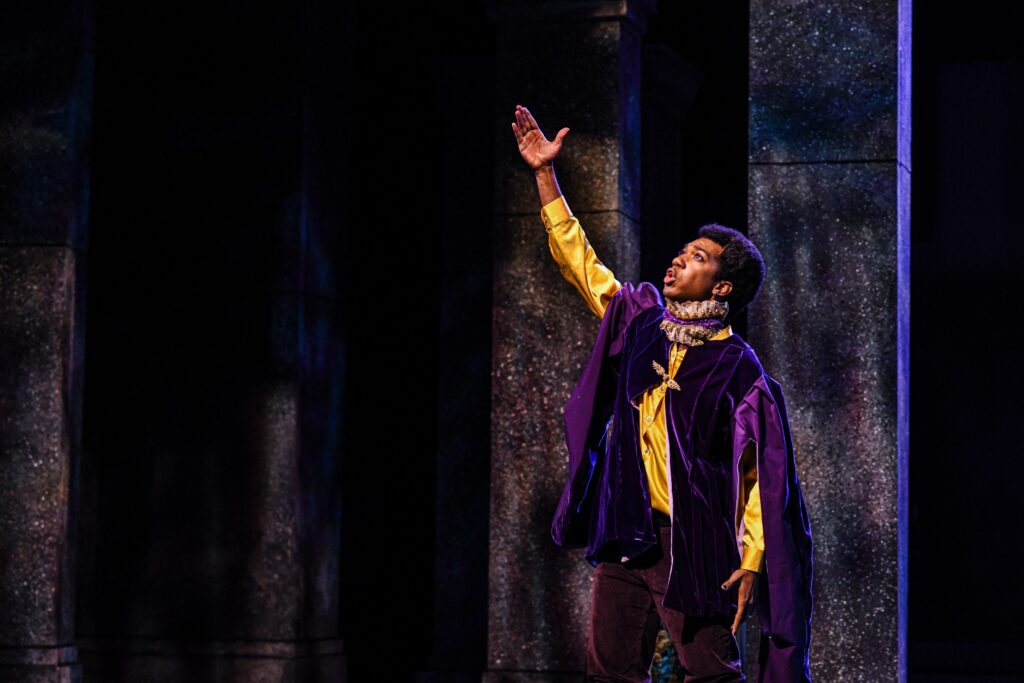
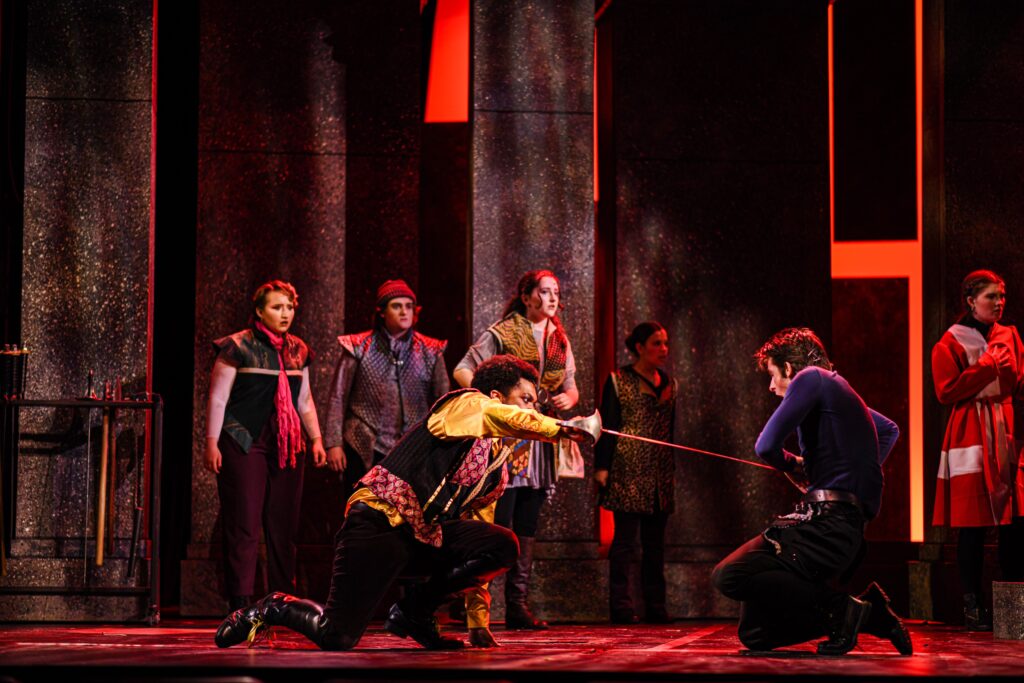
This collaboration takes place on the Collins stage from April 17-28. The shows on April 18, 19, 20, 25, 26, and 27 start at 7 p.m., and the matinees on the 21st and 28th take place at 2 p.m.





